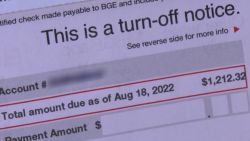US oil prices briefly tumbled below $100 a barrel on Monday, unwinding a significant chunk of the recent spike caused by Russia’s invasion of Ukraine.
Oil plunged more than 8%, touching a low of $99.76 a barrel. That means oil has lost almost roughly quarter of its value since touching a near 14-year high of $130.50 a barrel on March 6.
It’s the first time oil has traded below $100 since March 1.
“This is one hell of a correction,” said Tom Kloza, global head of energy analysis at the Oil Price Information Analysis.
The selloff should ease fears of an energy-driven recession in the United States and, if sustained, should bring some relief to drivers dealing with record gasoline prices.
Brent crude, the world benchmark, dropped more than 7% to $104.35 a barrel in recent trading. That marks a sharp pullback from the recent peak of nearly $140 a barrel.
Traders blamed Monday’s losses on concerns about Covid-19 lockdowns in China and hopes for progress in negotiations between Russia and Ukraine.
“You’re seeing some vicious selling,” said Matt Smith, lead oil analyst of the Americas at Kpler.
Despite the recent selling, oil remains up by more than 30% on the year.
What this means for gas prices
Still, the tumble back to $100 should cool off prices at the pump, which move with a lag to oil.
If oil prices stay at current levels, the national average price for regular gasoline would likely dip by about 20 cents a gallon, Kloza said. That would mean gas prices are still high — and above $4 a gallon nationally — but below record highs.
Gas prices have already stopped going straight up, even before Monday’s sharp decline in oil. According to AAA, the national average stands at $4.33 a gallon on Monday. That’s unchanged from Friday, so things seem to be leveling out — albeit basically at record highs.
Unfortunately, any relief at the pump may not last long.
Kloza still expects gasoline prices to rise this spring and summer as demand recovers, with the national average climbing to around $4.50 a gallon.
“It’s just going to be a wild ride,” Kloza said.
Ryan Fitzmaurice, energy strategist at Rabobank, similarly believes oil prices have not yet set their highest levels of the current cycle.
“Ultimately, we’ll see new highs before all is said and done,” said Fitzmaurice. “Given how big and important Russia is, we will probably breach those all-time highs set in 2008.”
Covid lockdowns in China
The latest leg of the oil selloff came after China locked down Shenzhen, a major technology hub, as well as several other regions to contain its worst Covid-19 outbreak in two years. The lockdowns in China, which has a zero-tolerance Covid policy, raised fears in the energy market about slower demand from the world’s No. 2 economy.
“Coronavirus has taught us you cannot count on a stable outcome,” said Kloza. “Just when you think people are going back to normal behavior, here it comes.”
Oil traders are also watching for developments in the war in Ukraine, including continued negotiations between Ukraine and Russia. A ceasefire could ease fears about a prolonged disruption in oil flows from Russia, the No. 2 oil producer in the world last year.
However, energy veterans cautioned against reading too much into the headlines around negotiations between Russia and Ukraine.
“I am super skeptical about any kind of negotiations having success here, period,” said Robert Yawger, vice president of energy futures at Mizuho Securities.
Yawger said even if a ceasefire were to emerge, the West is very unlikely to swiftly remove sanctions on Russia: “Sanctions are not going to disappear anytime soon.”
























